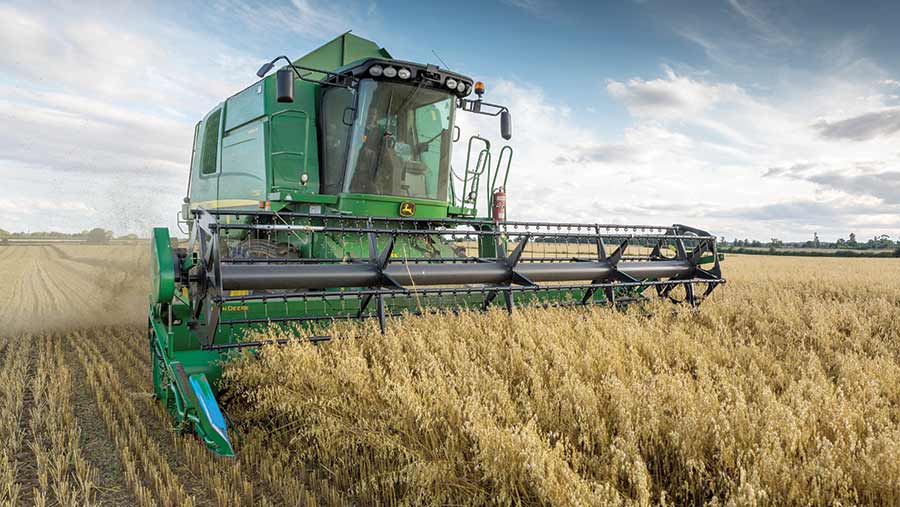Oat market offers opportunity for farms in the right areas
 © Tim Scrivener
© Tim Scrivener Oats are the UK’s third largest home-grown cereal crop, behind wheat and barley, and they can be a profitable addition to arable rotations.
They are a useful low-input cereal break crop, often grown in the second cereal slot, and can have a role in reducing soil-borne diseases such as take-all.
However, the deciding factors in whether oats are a good choice for growers are farm location and variety choice, with milling qualities more important than overall yield.
See also: Tips on managing BYDV in cereals without neonic seed treatments
While all millers are ultimately looking to buy oats which separate well and do not produce much husk, each miller has its own specific requirements and preferred varieties.
Hulling losses
Winter mainstay Mascani is the variety of choice for Bedfordshire-based Richardson Milling, as it separates well and hulling losses are relatively low, but the variety does not perform well for growers further north.
Therefore, the first step for any grower looking to include oats in their rotation should be to contact their local miller to find out how best to meet their needs.
Gill Haggarty, PepsiCo UK’s oats purchasing manager, is looking for both spring and winter varieties as this spreads the risk for both growers and merchants.
Established winter varieties such as Gerald and Dalguise remain good options for her growers as choice in winter varieties is somewhat limited, but the newer varieties starting to come through look exciting, she adds.
“When selecting a variety, if it has a higher field yield look at whether it has a high screening level – that’s the caveat,” she says.
“Yes, millers are looking for kernel content and specific weight, but they are also looking at screening level.”
She advises: “Find out who your local mill is and what they want, and always grow on contract for that specific miller if you can.”
Off contract
Richardson Milling agronomy manager Brin Hughes says growers should not be put off if there are no contracts available for the 2018 or 2019 season, as long as they grow to the miller’s requirements.
“We have filled all our contracts, but we can’t contract 100% and so will still buy on the open market,” he says. “We have our preferred choices, but we will have to buy other varieties to meet our demand.”
Naked oats
With naked oats, contracting opportunities for the livestock feed market are limited, but with a 100% buyback guarantee and premiums over AHDB wheat prices, they can be seriously lucrative, says Agrii naked oats product manager Skye van Heyzen.
“I always tell growers that naked oats aren’t for everyone. There are pitfalls to every crop, but if you are going to have a proper go they really can work.”
Currently Agrii supplies two winter and two spring varieties to its growers, with another variety on the horizon which yields slightly higher and is a lot cleaner.
“Another market to think about is oat straw,” says Mr Van Heyzen. “It’s unbelievably valuable for cattle feed, particularly for this next season when there is likely to be a shortage of straw.”
Low-lignin animal feed
Opportunities for oats as livestock feed will increase in the future with the introduction of new variety Galloway as a candidate variety.
Bred by IBERS, it is the first low-lignin variety to come to the market, making it more easily digestible for ruminants than traditional husked varieties.
This digestible husk, combined with high oil content, can be produced more cheaply than naked oats and is ideal for use in energy-dense rations, allowing growers to tap into a market currently served largely by imported soya from South America.

